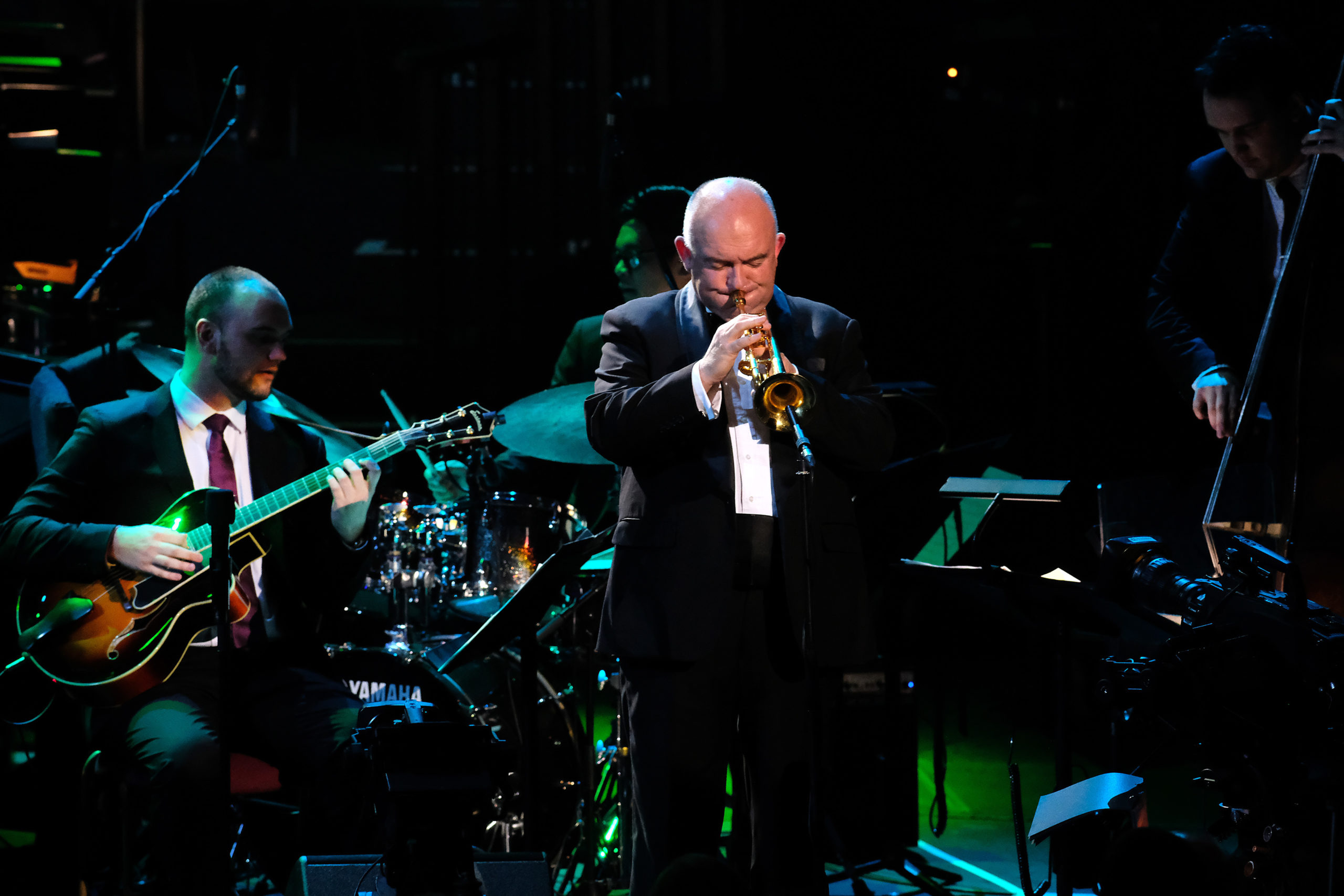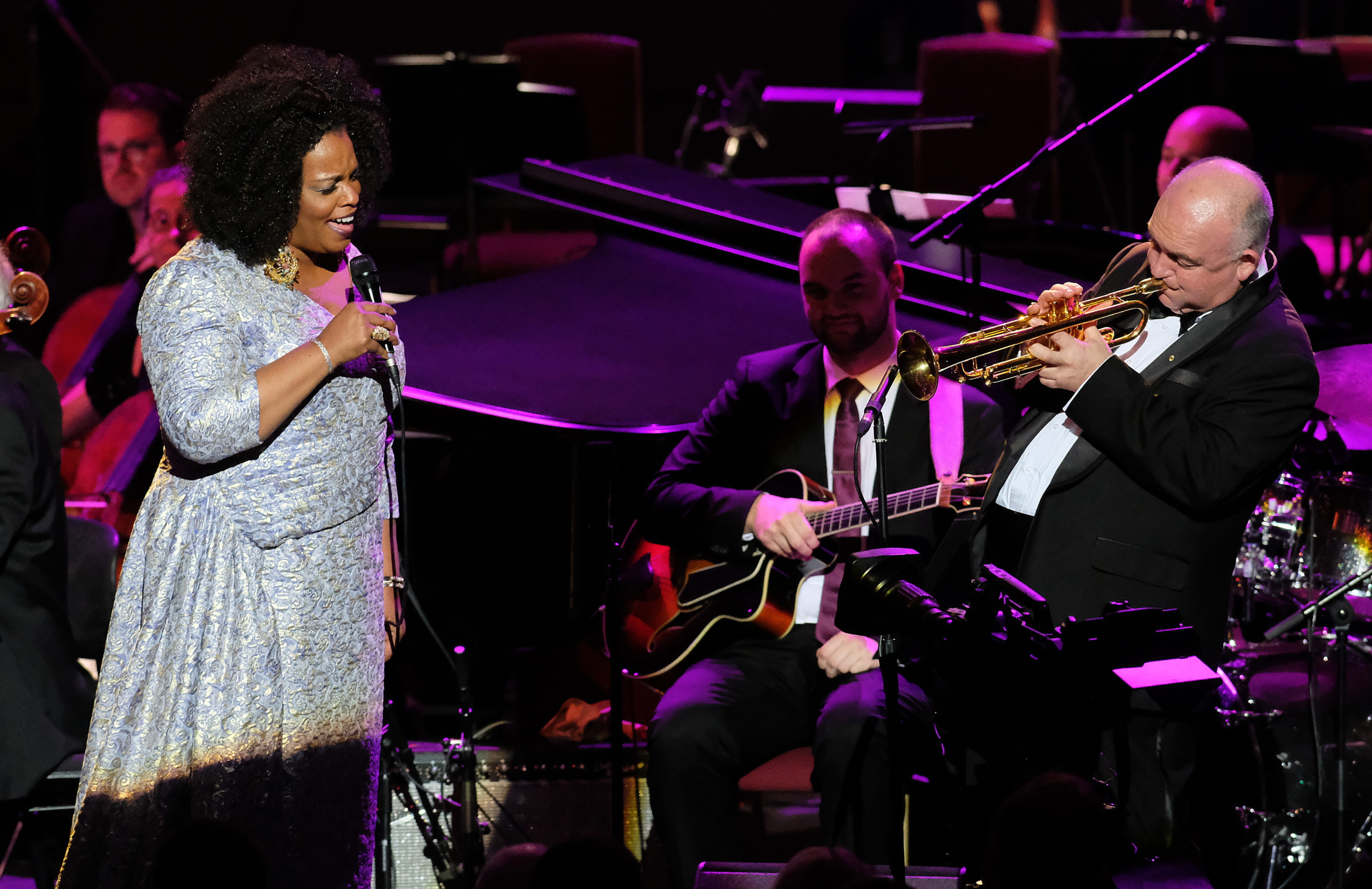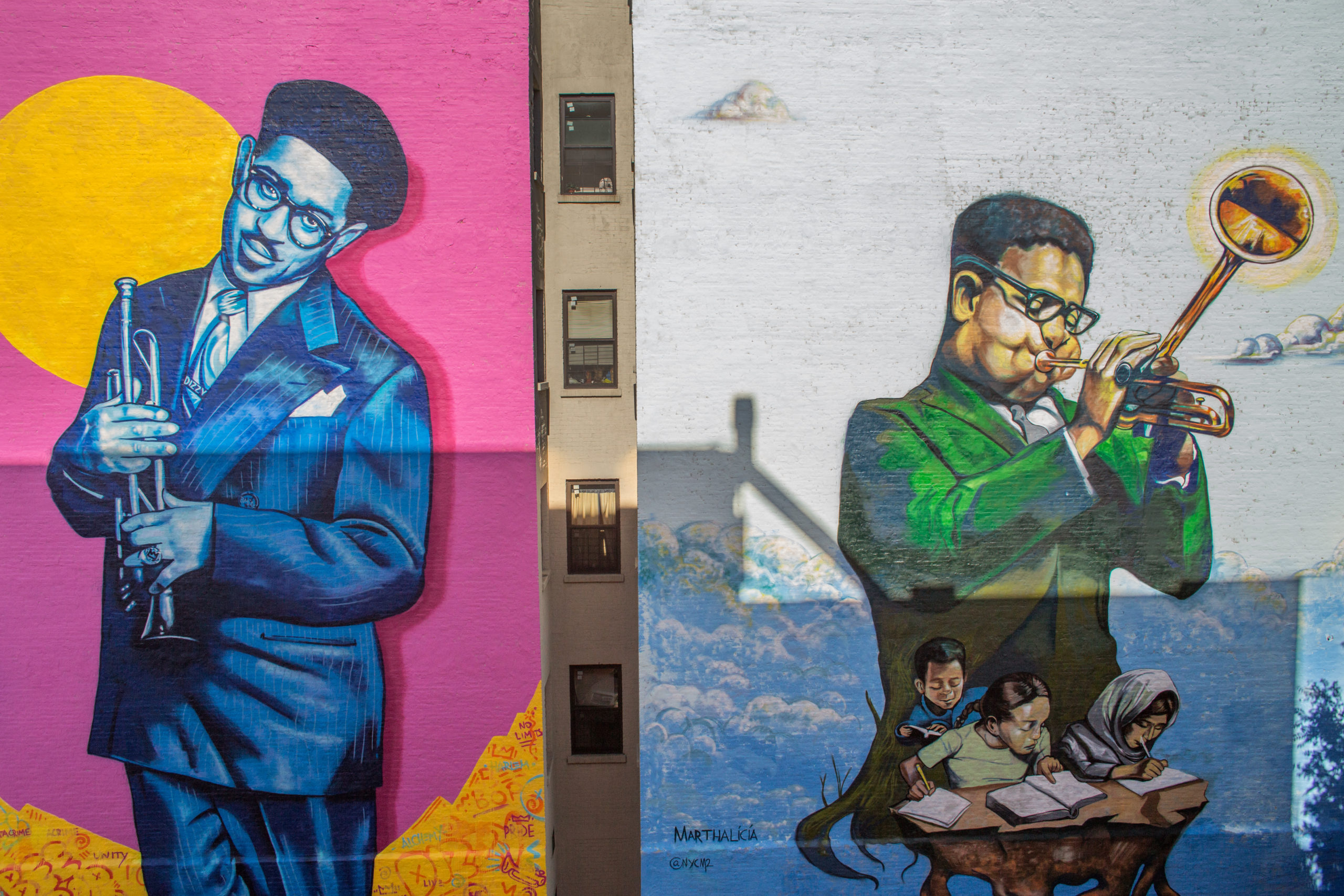NEW YORK – Dizzy Gillespie is remembered not only for his genius as a trumpeter who broke new ground in jazz but also for his long-standing dedication to the teachings of Baha’u’llah. Reflecting on the life and accomplishments of this iconic figure 100 years after his birth would be incomplete without reflecting on the Baha’i belief that seemed most to inspire and drive his work—that all human beings are part of one family.
“Dizzy represented an organic breakthrough in music,” asserts jazz pianist Mike Longo about Dizzy Gillespie, his late collaborator and friend.
“His music is from such a deep place,” Longo says, scanning the walls of his apartment on Riverside Drive on Manhattan’s upper west side. Framed photographs capture the decades of a musical partnership that ranged from playing sold-out concerts in major venues to private practice sessions at Gillespie’s home in Englewood on the other side of the Hudson River.
But jazz was not the only uniting factor in Gillespie and Longo’s enduring friendship. Both men were attracted to Baha’u’llah’s message of oneness and unity—principles that would lead them to embrace the Baha’i Faith.
“The night I joined the band was the night he heard about the Baha’i Faith,” says Longo.
When Gillespie encountered the Baha’i Faith for the first time, after a concert in Milwaukee, he discovered that it immediately resonated with his thinking—and his music.
“Jazz is based on the same principles as the Baha’i Faith,” says Longo. “Interracial mixing was way back when jazz first started. Dizzy described jazz as a marriage between African rhythm and European harmony and so, if you look at that from a broader perspective, that’s a marriage between the black race and the white race. And Dizzy’s music specifically, when they say that the Prophet unleashes a new power in the universe, Dizzy’s concept of bebop…is a reflection of that.”
Gillespie’s deep commitment to unity and justice expressed itself through the inclusive spirit that characterized his music and his interactions with people of all walks of life.

BEBOP PIONEER
Born John Birks Gillespie in Cheraw, South Carolina, on 21 October 1917, Dizzy Gillespie was at the cutting edge of the bebop jazz phenomenon in the 1940s, often considered the most radical and vital music of its time. Bebop is characterized by its high energy tempos and rapid key changes, complex chord progressions, and dazzling improvisations around a melody.
“They were doing very difficult things,” explains British jazz and art critic Martin Gayford. “Gillespie’s technique alarmed other trumpet players, particularly because he was playing so high.”
“While Charlie Parker came up with the phrasing and the rhythmic approach, Gillespie’s contribution was more the technical side of the harmony and great showmanship.”
“The photographs that typify the bebop era are of Dizzy, with his beret and goatee beard,” says Gayford.
That vibrant persona and sheer technical virtuosity—with Gillespie’s trademark cheeks ballooning out bullfrog-like around the mouthpiece of his distinctive bent trumpet—make him a hard act for trumpeters to follow today.
“When, at the age of 8, I first heard a recording of his music, I was just astonished by what the trumpet could do,” says James Morrison, the celebrated Australian musician who was at the helm of an anniversary tribute concert held at London’s Royal Albert Hall on 4 August 2017, as part of the world-famous BBC Proms concert season.
“I have always been inspired by his way of playing the trumpet,” says Morrison. “I’m very heavily influenced by him.”
Morrison, who played with Gillespie on a number of occasions, believes his outgoing personality helped to make his innovative music a lot more accessible.
“He was there pushing boundaries, but he was so approachable as a person. There is a clichéd idea that an innovator has to be a dark, brooding person, off in his own world. But Dizzy was so garrulous and made such a great connection with the audience.”

Photo by Mark Allan

ENCOUNTERING THE BAHÁ’Ì FAITH
It was just such an audience member who first introduced Gillespie to the Bahá’í Faith. Beth McKenty, a Canadian who attended one of his shows in Milwaukee, had been inspired to reach out to him after reading about the tragic death of Charlie Parker, bebop’s co-originator. Parker was a saxophonist, who had at one point claimed that Gillespie was the “other half of his heart.” He died in 1955 at the age of 34, following a long period of drug addiction.
“Beth had called Dizzy and told him, ‘Charlie Parker didn’t have to die like he died’ and could she talk to him,” remembers Longo. “And so that night, she and her husband came and Dizzy was sitting with them at the table and she told him about the Bahá’í Faith and gave him a lot of literature.”
THE UNITED NATIONS ORCHESTRA
“Gillespie was around for a very long time,” reflects Martin Gayford, “from the 1940s right through to the 1990s. So he became something of an elder statesman of jazz, and a great encourager of young talent.”
The most ambitious, and final, fusion of his music with his religious beliefs was Gillespie’s formation of his United Nation Orchestra, with which he toured the world in the 1980s. The Bahá’í principle of building unity that maintains and celebrates cultural diversity was Gillespie’s key inspiration for the big band made up of younger musicians from the United States and outstanding players and singers from Brazil, Cuba, and Panama.
“That’s what he believed in,” says Longo, “and so that’s what the principle of the United Nation Orchestra was.”
“In the Bahá’í religion we don’t believe in cutting loose anything good,” Gillespie wrote. “Cut loose your heritage? Bahá’ís believe that you bring it in and work with others. Bring it into the whole just like a master painting. Because I’m purple and there’s another cat who’s orange doesn’t mean that we can’t come into one big compatible complementary arrangement. Just contribute from your own uniqueness, but don’t get over in their groove. Stay outta theirs!”


A LASTING LEGACY
Since his death in 1993 at the age of 75, Dizzy Gillespie continues to be revered by enthusiasts the world over. His music has become the subject of academic study and symposia; his recordings are constantly being remastered, reissued, and rediscovered by younger generations. In the coming months, tribute concerts marking 100 years since his birth are taking place across the globe.
“When you pay a tribute to someone, there’s that question – do you imitate them?” says James Morrison. “And I believe, sound-wise—no. There are recognizable ‘Dizzyisms’ in what happens, but a true tribute is to create the atmosphere. It’s always like he was having a party, and he would take that onto the stage. I’ve always felt that’s what I wanted to do too.”
But Mike Longo believes Gillespie’s music is still not fully understood. Speaking at the trumpeter’s funeral in 1993, Longo told the congregation that, “a lot of people know what Dizzy played but they don’t know how he played.”
“At this point in time most of the educators and so forth are imitating it,” he says. “They don’t understand the concept, they understand the notes. So they imitate the notes and they try to imitate the feeling, but they’re not coming up with the essence yet. So he’s not fully appreciated yet.”
“Might be another 100 years before that happens,” Longo laughs.
Listen to the podcast episode associated with this Bahá’í World News Service story.


